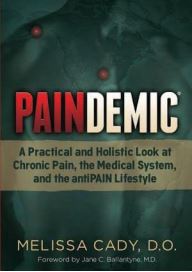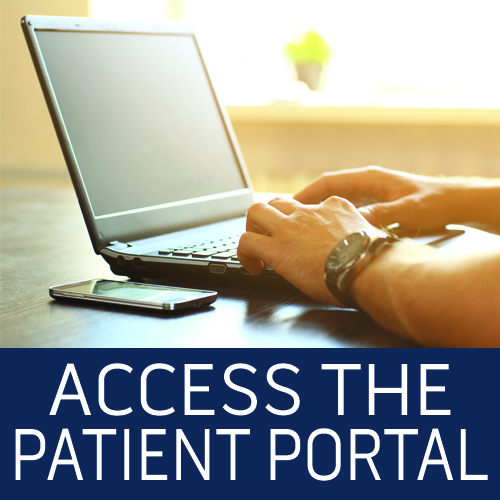PAINDEMIC: What is Causing Our Pain-Epidemic?
AUTHOR What is Melissa Cady, D.O. Physician & Founder of antiPAIN Lifestyle, L.L.C.
There is no doubt that more opioids are being used than necessary, with associated unintentional deaths—almost 45 Americans per day in 2010! (1) Yet, voices rise after hearing condemnation of opioids, or when having difficulty in obtaining them. They are the people who already found opioids helpful or believe that they are helpful. Then, there are those who do not have access to adequate treatment and proclaim “undertreatment” of pain. Fewer opioids, more opioids, or undertreatment of pain seem to be the prominent arguments in the pain community.
True, some people can function well on intermittent use of opioids. However, if numerous patients are so mentally clouded by the opioids that they use and/or do not do anything for themselves in the form of enhancing their own function or mental/physical health (aka self-care), then those drugs’ benefits are not outweighing the risks. We cannot only blame the patients, the medical system must also take responsibility.
But herein lies the dilemma. Physicians are so poorly trained in medical school on the various treatments of pain that patients have less chance of receiving the best care for their pain. If better treatments with less risk are NOT emphasized or taught to physicians, then how are patients going to recognize their importance? The savviest of pain patients may realize that there are better ways than pills, injections, or surgeries (when no red flags are present). Unfortunately the journey to ideal pain care can be arduous, complicated, and delayed. It should be easier, but we must focus on the real issue.
Too many opioids is not the true problem. Undertreatment is not the true problem. Opioids and undertreatment, in and of themselves, are symptoms of a much greater, invisible problem—inappropriate treatment.
Why do these two symptoms and others exist?
Symptom #1: Opioids & Drug Overdoses 
The excess of opioids and overdose deaths are the consequences of too many physicians giving out too many opioids for the symptom of pain for several reasons:
• Do not understand or are unable to better diagnose the cause of pain
• Do not have the time to address the complicated issue more completely
• Do not have or appreciate other tools to offer the patient
• Do not have the cooperation of medical insurance or other third-party payers for more conservative options
• Do not have the appropriate conservative therapy resources for referral of patients
• Difficulty with ascertaining who is most vulnerable to addiction or diversion of the drugs
• Patients may demand opioids and/or be unwilling to put in other efforts
Opioids address symptoms, but they should be a last resort or a temporary bridge in most cases, not an approach that lasts for years. (2) This can lead to lost time, which can complicate the original problem. Other physical and emotional complications can arise while the primary issue simmers, creating a more difficult situation to tease out later.
Symptom #2: Undertreatment of Pain
Undertreatment of chronic pain can result from:
• Physician’s insufficient understanding of pain
• Patients may give up on the medical system due to frustration or despair
• Physicians do not have or appreciate other tools to offer the patient
• Lack of time with patients
• Lack of medical insurance coverage
• Lack of appropriate resources in patient’s region
• Disbelief that the patient’s invisible burden of pain is real
Undertreatment of pain is the consequence of multiple forces within the medical system. Physicians are either limited by the skills that they were taught or limited by third-parties who restrain their ability to get the best care for their patients.
There are many other symptoms, but suffice it to say that trying to fix these cultural symptoms without addressing the cause— inappropriate treatment—will not truly improve this PAIN-epidemic or PAINDEMIC®. (3) Sending physicians to conferences, which typically rehashes different ways of using medications without discussion of other human factors (e.g. biomechanics, connective tissue, nervous system, etc.) is not expanding the physician’s toolbox and is a disservice to patients.
How Do We Reverse this Country’s PAINDEMIC®?
1. Medical schools need to incorporate more diverse education on ways to address pain.
2. D.O.’s, P.T.’s, Chiropractors, M.D.’s, etc. need to share how their skills/results can be incorporated into better diagnostic abilities, which can lead to more precise, reliable research.
3. Physicians and non-physicians need to collaborate more on research together. We need to understand, diagnose, and treat pain better.
4. Translate the research back to the medical schools for better understanding and training of future physicians.
5. Physicians need to accept and open their minds to the idea that many non-physicians have been successful at helping patients when physicians have not.
6. Non-physicians who are successful with patients need to step-up and present their results in a respectful way to help physicians recognize the non-physician’s skills.
7. Physicians and non-physicians need to acknowledge the limitations of each other’s skills and consider how they can complement one another. There is a time and a place for each skill.
8. The pain profession needs to believe and listen to the patient, and do the RIGHT thing without pigeonholing the patient into one treatment in the name of profit.
9. As a general pain profession, we need to help patients see the big picture when pain issues are not straightforward. The patient/physician culture needs to change.
10. One of the toughest issues is physicians relying on third-party payers who dictate the value of the medical professional’s service. It will take strategy to rely less on those middlemen or create a bigger fight from all of us. If we want to do the right thing, then we are all in this together.
 Dr. Melissa Cady is the author of Paindemic: A Practical and Holistic Look at Chronic Pain, the Medical System, and the antiPAIN Lifestyle. More information about Dr. Cady and her book can be found at http://melissacady.com/.
Dr. Melissa Cady is the author of Paindemic: A Practical and Holistic Look at Chronic Pain, the Medical System, and the antiPAIN Lifestyle. More information about Dr. Cady and her book can be found at http://melissacady.com/.
RESOURCES:
1. CDC (Centers for Disease Control and Prevention). Vital Signs: Opioid Painkiller Prescribing. July 2014. http://www.cdc.gov/vitalsigns/opioid-prescribing/
2. Roger Chou et al, “The Effectiveness and Risks of Long-Term Opioid Therapy for Chronic Pain: A Systematic Review for a National Institutes of Health Pathways to Prevention Workshop,” Ann Intern Med. 2015;162(4):276-286. doi:10.7326/M14-2559
3. Melissa Cady. PAINDEMIC: A Practical and Holistic Look at Chronic Pain, the Medical System, and the antiPAIN Lifestyle. (New York, NY: Morgan James Publishing, 2016).





